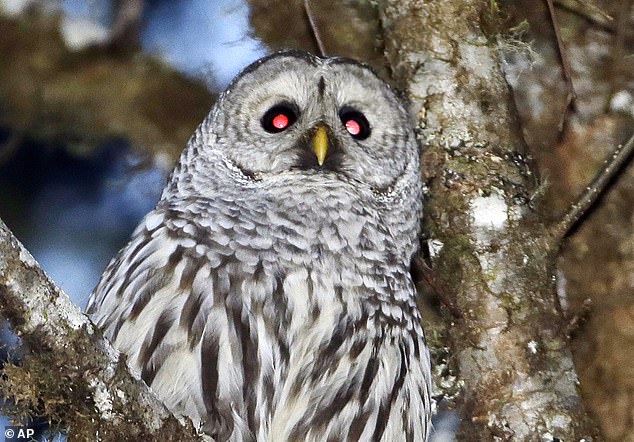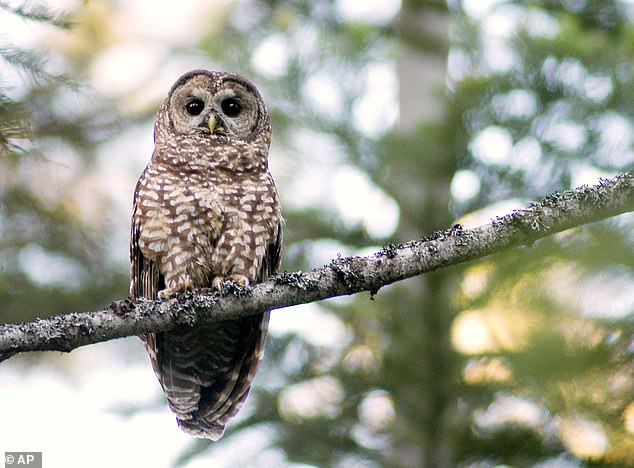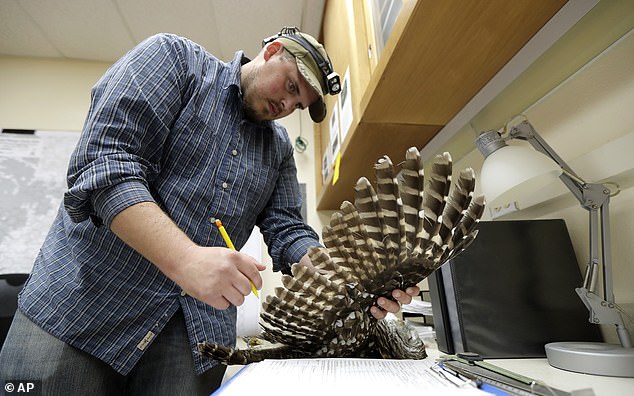To save the endangered spotted owl, U.S. wildlife authorities are adopting a controversial plan: hiring trained marksmen to kill rivals.
The U.S. Fish and Wildlife Service’s strategy released Wednesday aims to shore up declining spotted owl populations in Oregon, Washington state and California.
Trained marksmen will be deployed in the dense forests of the West Coast to kill nearly half a million barred owls that are displacing their endangered cousins.
Documents released by the agency show that about 450,000 barred owls would be hunted over three decades, a solution designed to level the playing field after the invasive species of owl from the eastern U.S. encroached on Western territory.
The two smallest native owls of the Pacific Coast, the northern spotted owl and the great horned owl, California Spotted OwlsThey have proven unable to compete with invasive barred owls, which breed in greater numbers and require less space to survive.
To save the spotted owl from possible extinction, U.S. wildlife authorities are adopting a controversial plan: hiring trained marksmen to kill its rivals. Above, wildlife technician Jordan Hazan records data in a lab on a rival male owl he shot earlier that night.
Previous efforts to save spotted owls focused on protecting the forests where they live, sparking bitter fights over logging but also helping to slow the birds’ decline.
The proliferation of barred owls in recent years is undermining that earlier work, officials said.
“If barred owls are not actively managed, northern spotted owls will likely become extinct throughout all or most of their range, despite decades of collaborative conservation efforts,” said Oregon Fish and Wildlife Service State Supervisor Kessina Lee.
But the idea of killing one bird species to save another has divided wildlife advocates and conservationists.
It’s a reminder of the government’s efforts to save West Coast salmon. Killing sea lions and cormorants that take advantage of the fish and to preserve the warblers Killing thrushes that lay eggs in warbler nests.
Some advocates grudgingly accepted the barred owl removal strategy, while others said it was a reckless departure from necessary forest preservation.
“The Fish and Wildlife Service is moving from being a protector of wildlife to a persecutor of wildlife,” said Wayne Pacelle, founder of the advocacy group Animal Wellness Action.
Pacelle predicted the program would fail because the agency would be unable to prevent more barred owls from migrating to areas where others have been killed.

A barred owl is pictured in the woods outside Philomath, Oregon, in December 2017. To save the endangered spotted owl, U.S. wildlife officials are adopting a controversial plan to deploy trained marksmen.

Above, an endangered California spotted owl stares at human observers in the Tahoe National Forest in California, July 12, 2004.
The shootings would likely begin next spring, officials said. Barred owls would be lured using megaphones to broadcast recorded owl calls and then shot with shotguns. The carcasses would be buried on site.
Supporters include the American Bird Conservancy and other conservation groups.
Barred owls don’t belong in the West, said Steve Holmer, vice president of the American Bird Conservancy. Killing them is unfortunate, he added, but reducing their numbers could allow them to live alongside spotted owls in the long term.
“As old growth forests are allowed to grow back, we hope that coexistence will be possible and we may not need to do as much logging,” Holmer said.
Significantly, the culling would reduce barred owl numbers in North America by less than 1 percent annually, officials said.
This is compared to the possible extinction of spotted owls if the problem is not addressed.
Under former President Donald Trump, government officials Habitat protections stripped away for spotted owls at the behest of the timber industry.
Those measures were reinstated under President Joe Biden after the Interior Department said political appointees under the Trump administration relied on flawed science to justify weakening protections.
Northern spotted owls are federally protected as a threatened species. In 2020, federal officials determined that their continued decline warranted an upgrade to the more critical “endangered” designation. But the Fish and Wildlife Service declined to do so at the time, arguing that other species took priority.
Last year, federal protection for California’s spotted owls was proposed. A decision is pending.

